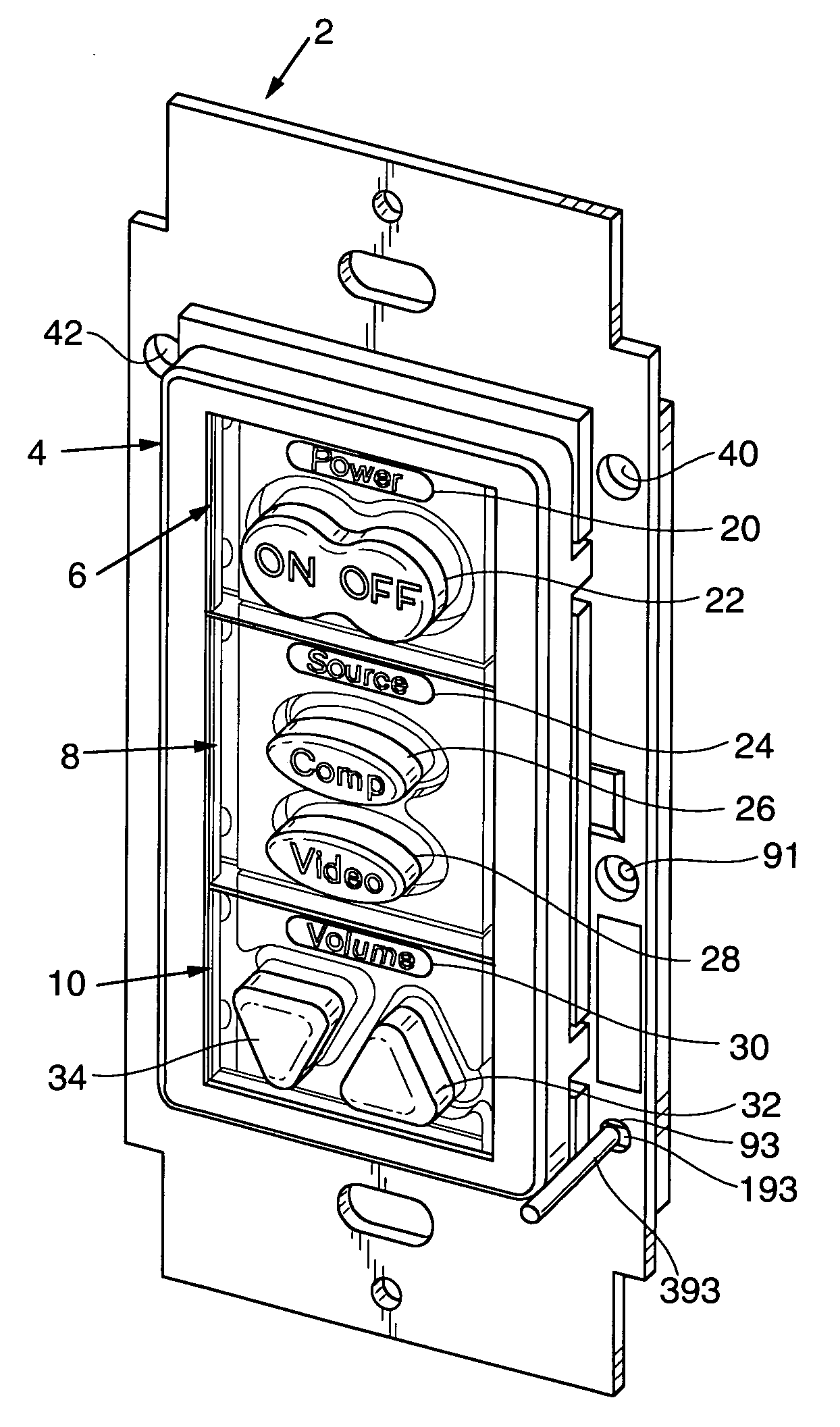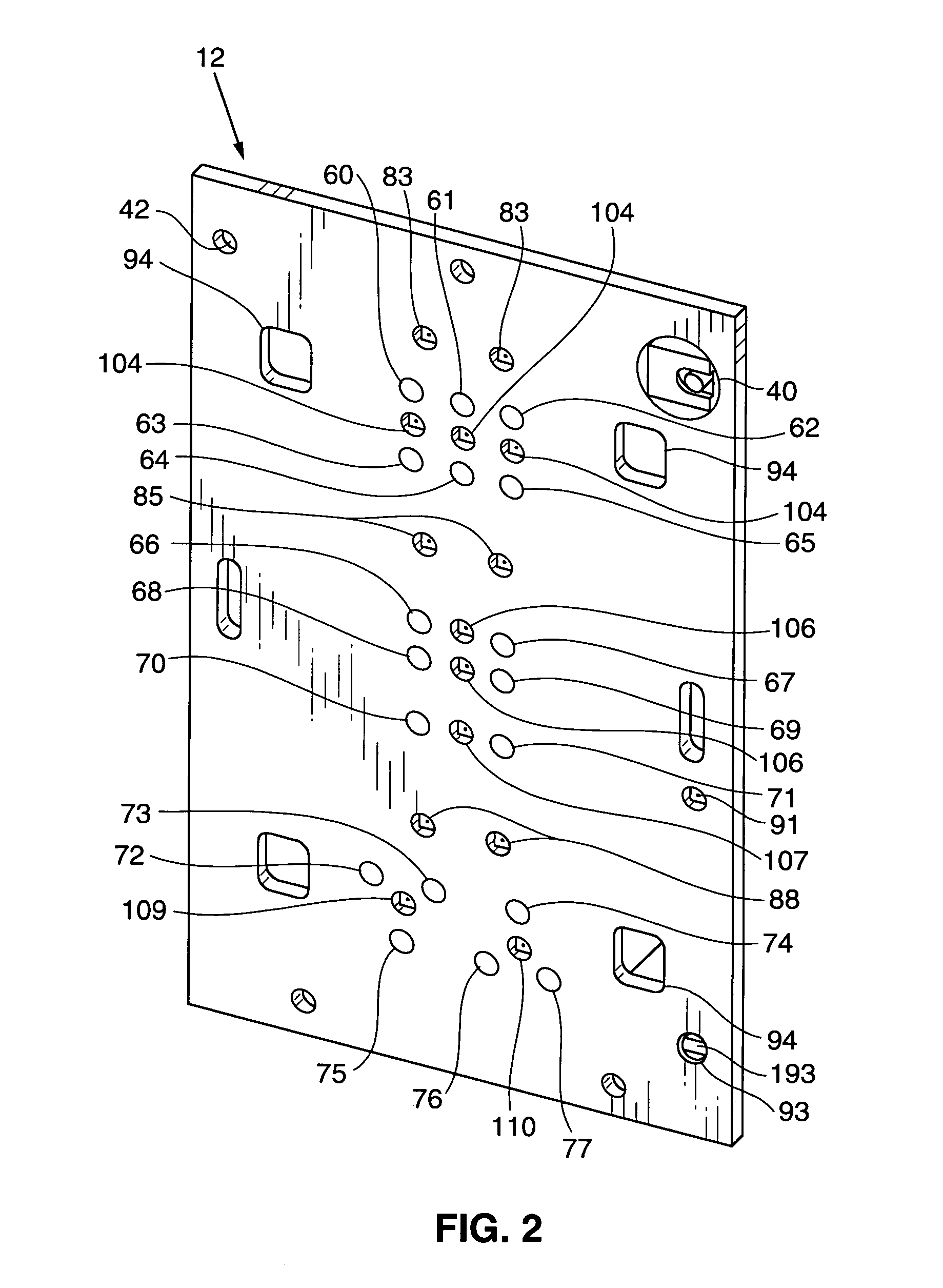Controller having reduced control key set and method for operating same in a learning, macro, or cloning mode
a control key and cloning mode technology, applied in the field of control key set reduction, can solve the problems of user's significant effort and attention to operating, and achieve the effect of effective toggle and high brightness
- Summary
- Abstract
- Description
- Claims
- Application Information
AI Technical Summary
Benefits of technology
Problems solved by technology
Method used
Image
Examples
Embodiment Construction
[0032] A wall-mountable embodiment of the inventive controller will be described with reference to FIGS. 1-8. As shown in FIGS. 1 and 3, this controller includes metal back plate 2 which is configured to be mounted by screws (not shown) in an electrical box in a wall. Printed circuit board (“PCB”) 12 is mounted to the back side of plate 2 with insulation plate 14 (shown in FIG. 8 but not visible in FIGS. 1 and 3) positioned between PCB 12 and back plate 2 to electrically insulate PCB 12 from plate 2. Circuit elements (to be described below) of the controller are surface mounted to PCB 12. These circuit elements include configurable microprocessor 80, crystal oscillator 81 (or another clock signal generation element) for use in generating a clock signal for use by microprocessor 80, EEPROM 82 (or another memory) for use by microprocessor 80 for storage of data which can configured, learned, cloned, and / or preloaded, illumination elements 83-91 (controlled by microprocessor 80), press...
PUM
 Login to View More
Login to View More Abstract
Description
Claims
Application Information
 Login to View More
Login to View More - R&D
- Intellectual Property
- Life Sciences
- Materials
- Tech Scout
- Unparalleled Data Quality
- Higher Quality Content
- 60% Fewer Hallucinations
Browse by: Latest US Patents, China's latest patents, Technical Efficacy Thesaurus, Application Domain, Technology Topic, Popular Technical Reports.
© 2025 PatSnap. All rights reserved.Legal|Privacy policy|Modern Slavery Act Transparency Statement|Sitemap|About US| Contact US: help@patsnap.com



